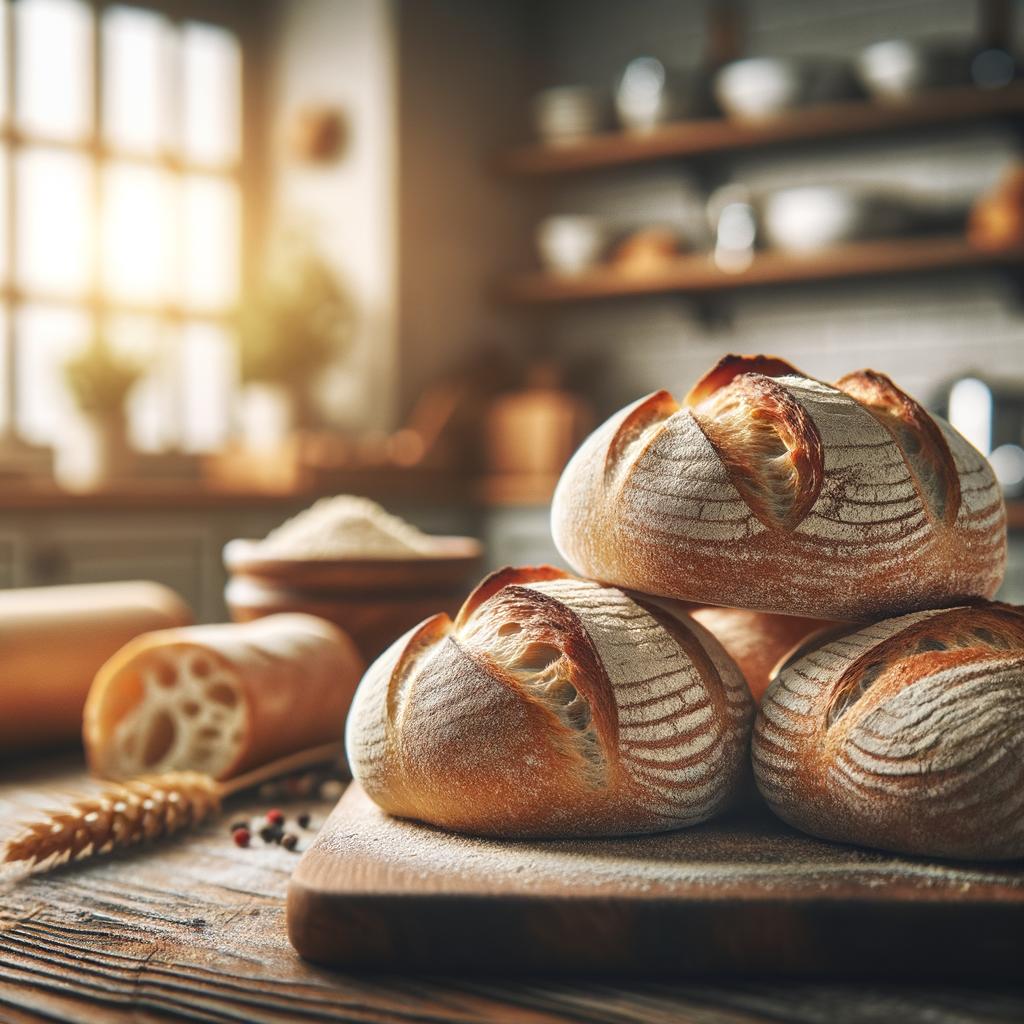Crusty Bread Rolls

Description
Crusty bread rolls, a humble yet versatile food ingredient, are the epitome of comfort and simplicity. These golden-brown gems, with their crackling exterior and soft, yielding interior, are a sensory delight. The tantalizing aroma of freshly baked bread fills the air as they emerge from the oven, their surface beautifully blistered and crackled. The texture is a study in contrasts: the crust is hard, crisp, and chewy, while the inside is soft, pillowy, and slightly elastic. The flavor profile of a crusty bread roll is subtly complex. It's mildly sweet with a hint of yeasty tang, and the crust offers a toasty, caramelized flavor that is deeply satisfying. What sets crusty bread rolls apart is their ability to straddle the line between rusticity and elegance, making them a beloved staple around the world.
Primary Uses
Crusty bread rolls are incredibly versatile in the culinary world. They are often served alongside soups and stews, their crunchy texture providing a delightful contrast to the smoothness of these dishes. They are a key component in sandwiches, from the simple butter and jam to gourmet creations with a myriad of fillings. In some cultures, they are torn and used to scoop up dips or mop up sauces. Outside the culinary realm, bread rolls have a deep cultural significance in many societies, symbolizing bounty, prosperity, and the simple pleasures of life.
History
The history of bread rolls is as old as civilization itself. The ancient Egyptians are credited with the invention of leavened bread, and from there, the art of bread-making spread across the world. Each culture put its unique spin on it, but the crusty bread roll, in its many forms, has always been a favorite. In medieval Europe, bread rolls were used as trenchers, a type of edible plate. Over time, the popularity of crusty bread rolls has only increased, with artisanal bakeries and home bakers alike striving to perfect the art of creating the perfect crust and crumb. There are countless stories and folklore associated with bread, from tales of miraculous multiplication to legends of bread rolls marking the path in a dense forest.
Nutritional Information
Crusty bread rolls, while simple, offer a decent nutritional profile. They are a good source of carbohydrates, providing energy for the body. They also contain small amounts of protein and fiber, especially if made with whole grains. Bread rolls also contain a range of B vitamins, which are essential for various bodily functions. However, they should be consumed in moderation as part of a balanced diet, as they can be high in calories. Compared to similar ingredients like flatbreads or tortillas, crusty bread rolls often have a higher calorie count due to their denser texture. Despite this, the simple pleasure of breaking open a warm, crusty bread roll, with its comforting aroma and delightful textures, is a joy that transcends nutritional facts and figures.

